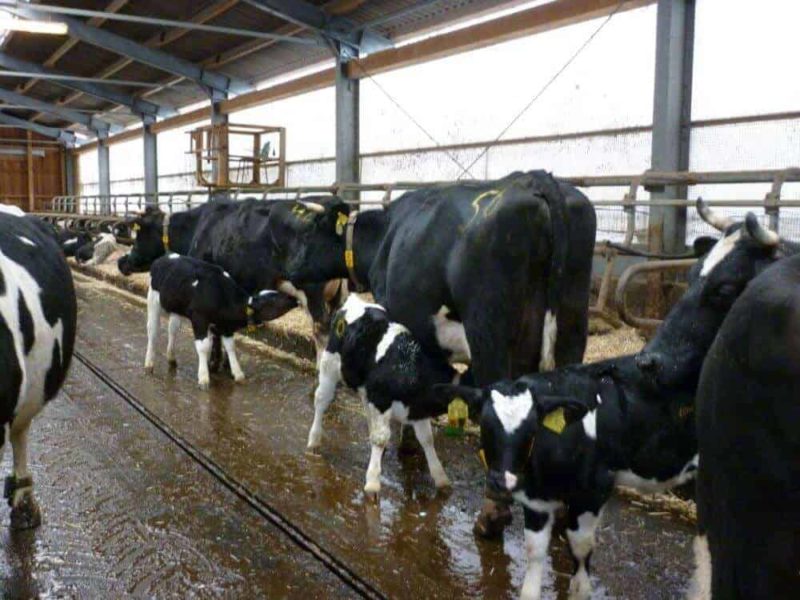Drinking milk is a big tradition in Austria. The country produces 3.4 million tons of milk a year. To help achieve this volume, dairy cows are typically separated from their calves just a few hours after giving birth. The calves are then fed milk or milk substitute via bucket or from an automatic feeder. The amount of milk the calves receive is usually much less than they would drink from their mothers. Calves and cows are therefore unable to form a relationship. After a few days or weeks in single housing, the young animals are usually transferred to a calf group.
Early separation has long-term effects
“Research has shown that the early social environment affects behaviour, stress reactivity and the ability to cope with different challenges in various animal species,” says project leader Susanne Waiblinger from the Institute of Animal Husbandry and Animal Welfare. Waiblinger and first author Kathrin Wagner studied these effects in dairy cows. A previously published substudy by the researchers already showed that rearing with maternal contact gives rise to adults with higher social competence.
Together with a group of colleagues from the Vetmeduni Vienna and the Thünen Institute of Organic Farming in Germany, Wagner and Waiblinger examined a total of 26 differently reared cows. Eleven animals were separated from their mothers immediately after birth before entering the calf group and being fed milk via automatic feeder. The remaining 15 calves were kept with their mothers in the calving pen for the first five days and were able to establish a mother-calf bond during this time. These calves were then also moved to the calf area, but continued to have contact to their mothers. Nine of these calves were allowed access to their mothers twice a day, while the remaining six were able to move between the calf group and the cow herd at all times.
The scientists performed different tests with the grown-up animals to determine whether the different rearing strategies had a long-term effect on the behaviour of the animals in stress situations.
Animals reared with maternal contact are more active in stress situations
“Cattle are herd animals. As expected, all animals, whether they were reared with or without mothers, produced higher levels of the stress hormone cortisol when being isolated from the herd, ” Waiblinger explains. Cattle which grew up with their mothers expressed the highest levels of cortisol during isolation, but the heart rate measured in these animals was the lowest. Waiblinger explains: “There are fundamentally different reaction types. Some animals respond to stress situations with an increased heart rate, others produce cortisol. It is possible that the different rearing treatments result in different reaction types.”
Differences could also be seen in the animals’ behaviour. Calves reared with their mothers, especially those who had constant maternal contact as well as contact to the herd, were more active during isolation: they moved more in their calving boxes and explored their surroundings more actively than cattle reared without their mothers. This could indicate a higher level of motivation to rejoin the herd and a more active way to cope with the challenge of isolation.
The research shows that a richer social environment during rearing, i.e. with contact to mothers and to other cows, makes animals more sociable and socially competent as adults.
Mother-bonded rearing of dairy calves is already in use at a number of farms. “In the future, we must increasingly consider whether a socially restricted early environment represents the ideal form of animal husbandry,” Waiblinger argues.


